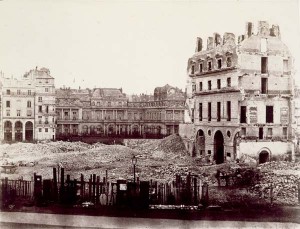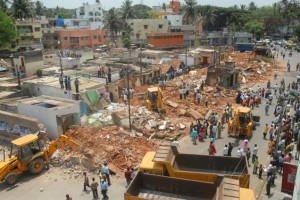In “Generic City, S,M,L,XL” Rem Koolhaas asks, “Did the Generic City start in America? Is it so profoundly unoriginal that it can only be imported?”(2.2). It seems that the shift of movement out of the city rather than in has caused an emotionless calm of character making these cities generic. The global market has not only looked at foreign models for business capital, but also for their urbanism. In the efforts to become capitalist, higher classes are moving to the suburbs into gated communities designed off foreign models making the city loose its identity and culture.
The city must have place and without place, the character and identity are lost. The Generic City is made by populations/cultures on the move.
“The same (let’s say ten-mile) stretch yields a vast number of utterly different experiences: it can last five minutes or forty; it can be shared with almost nobody, or with the entire population; it can yield the absolute pleasure of pure, unadulterated speed-at which point the sensation of the Generic City may even become intense or at least acquire density…” (3.2)
Without the controlled experience which occurs in a city, there is no memory. The identity is constantly changing. It becomes gray within a black and white picture and everything blends and blurs together. There are no clear connections with other parts of the city or with other people and cultures. Without culture, the Generic City gets imported through the global market blurring the lines of large geographical and cultural boundaries.
Capitalists and the global economy have been pushing the generic city while also destroying the city which once had identity. As seen in Beijing, capitalists and the government have been destroying, abusing, and suffocating money from the poor. These efforts are not only for economic value, but also for the rich to move out to the suburbs. They have imported cities like the Chateau Maison-Laffitte which was a copy of the one designed by Francois Mansart in 1650. There is a direct insertion into a culture which cannot appropriately benefit. What was once a village with farmers and cultivation and a lot of culture and history, is not a Disneyland effect of capitalism. As these different cultures get inserted on a global scale, there is no chance to return back to identity. The world is becoming an unclear, gray, super-society.
Koolhaas, Rem, and Bruce Mau. S M L XL: OMA. S.l.: S.n., 1993.
Broudehoux, Anne-Marie. Delirious Beijing: Euphoria and Despair in the Olympic Metropolis.

